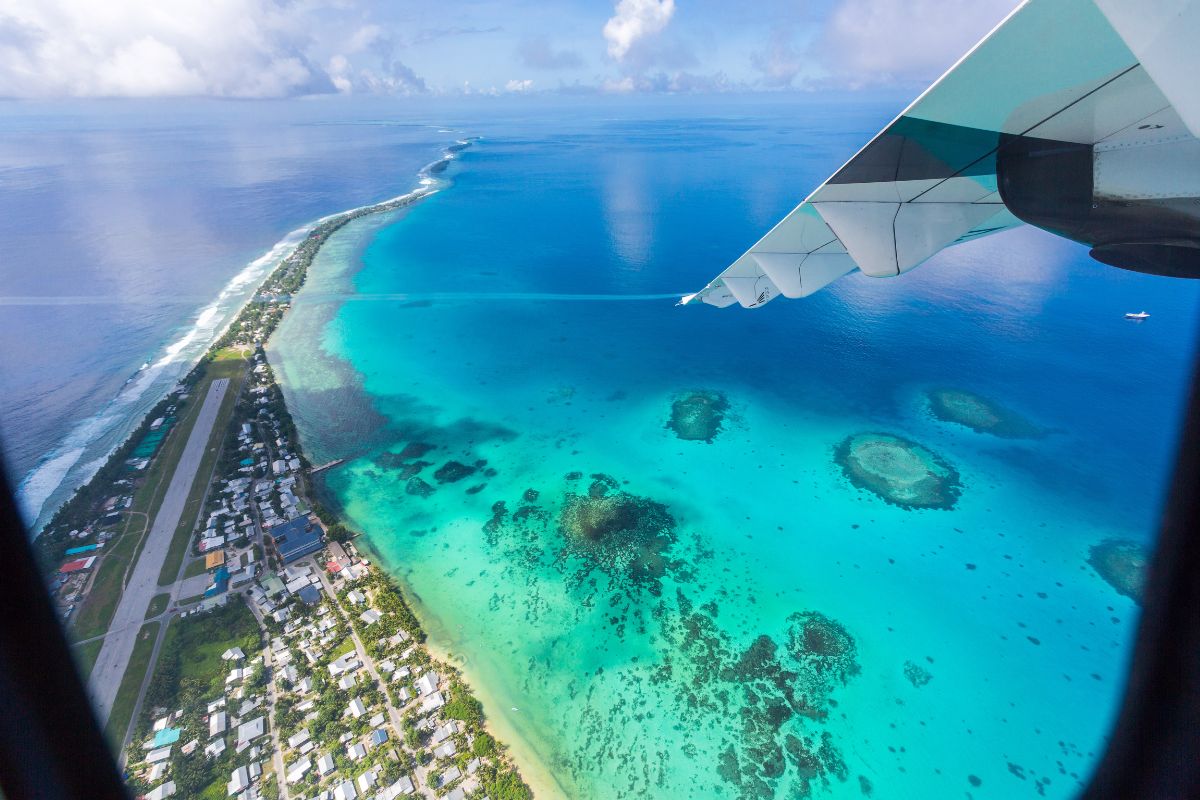Tuvalu faces rising seas and cultural loss as climate migration to Australia begins. A third of its people seek visas. The nation is on borrowed time — and borrowed land.

@Canva
In Tuvalu, the tide doesn’t just rise — it decides. It determines the borders, the houses still standing, and now, the fate of an entire nation. This tiny Polynesian archipelago in the heart of the Pacific is made up of nine low-lying atolls, where the average elevation barely reaches 6.5 feet (2 meters). In this fragile setting, over a third of the population — about 4,052 people including applicants and their families — has applied for a climate visa to Australia. That’s an unprecedented figure, considering Tuvalu’s total population is less than 11,000.
The visa program, part of the Falepili Union bilateral agreement, offers 280 visas per year. The number is carefully calculated to prevent a demographic collapse, aiming to strike a balance between humanitarian protection and the preservation of local resources. Those granted a visa gain the right to live, work, study, and access healthcare just like Australian citizens. Crucially, the program also facilitates remittances to families back home — a point Tuvalu’s ambassador Tapugao Falefou highlighted when explaining its importance.
Rising waters and shrinking timelines
This migration isn’t driven by panic — it’s backed by science. Over the last 30 years, sea levels in Tuvalu have risen by nearly 6 inches (15 cm), about 50% faster than the global average. According to NASA’s projections, things are set to get worse. By 2050, half of Funafuti atoll — home to 60% of Tuvalu’s population — could be submerged by daily high tides. In the most extreme scenario, with a sea-level rise of 6.5 feet (2 meters), 90% of the island would vanish underwater.
Tuvalu isn’t standing still. The government has started building artificial land, adding about 17 acres (7 hectares) so far, with more on the way. The goal is to hold back the ocean until at least 2100. But Tuvalu’s geography — some land strips are only 65 feet wide (20 meters) — makes these efforts feel like building sandcastles in front of a tsunami.
More than land is being lost
But it’s not just about losing land — it’s about losing identity. With migration, there’s a real risk of cultural fragmentation. Oral traditions, language, customs, and tight-knit community ties could all weaken as people scatter across foreign shores. Experts are already talking about a “climate diaspora”, urging the world not to treat this as a mere logistical issue.
For many Tuvaluans, the Australian visa is a lifeline. It may raise difficult questions — about the long-term sustainability of mass migration, or the threat to cultural preservation — but it also offers something tangible in a time of extreme uncertainty.
Islands on the edge
Tuvalu’s story isn’t unique. It reflects a growing list of nations — from Kiribati to the Maldives — facing similar decisions under mounting climate pressure. In a shifting world, borders don’t just move — they evolve. And perhaps the biggest challenge will be learning how to navigate them with fairness, foresight, and collective responsibility.
